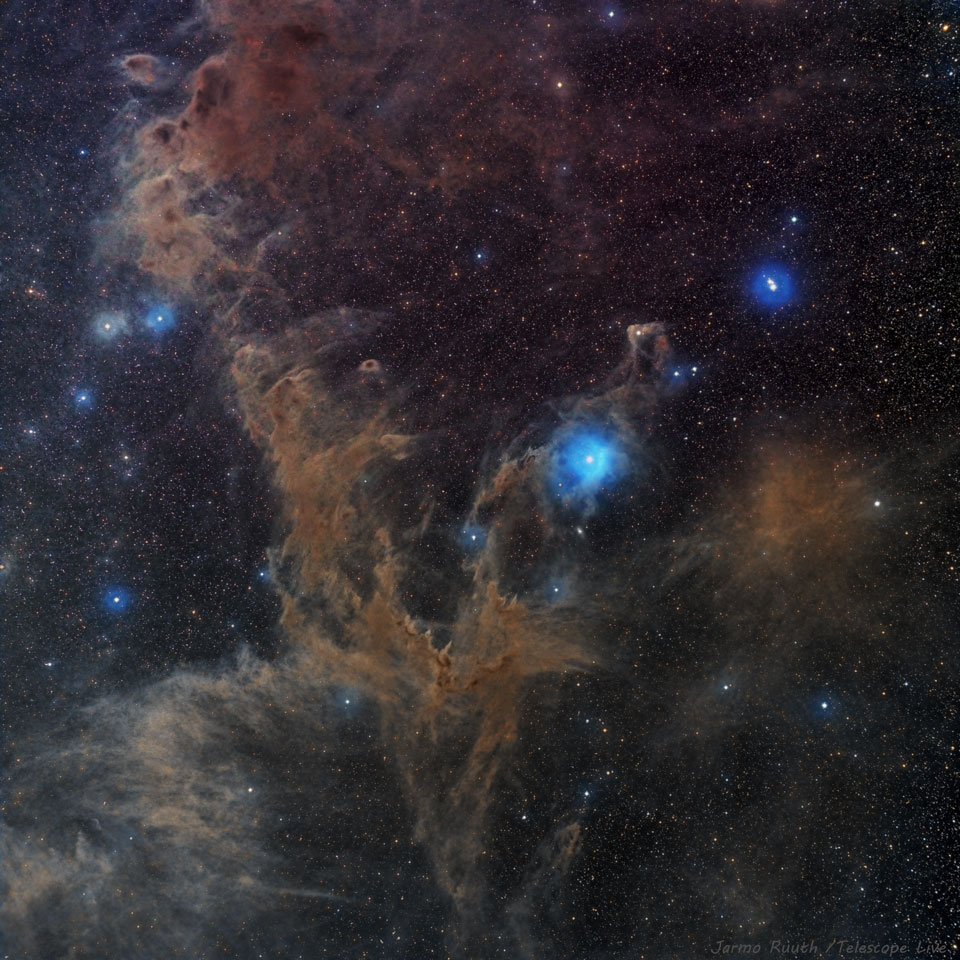2022年1月17日
Chamaeleon Dark Nebulas
Image Credit & Copyright: Jarmo Ruuth, Telescope Live, Heaven’s Mirror Observatory
Explanation: Sometimes the dark dust of interstellar space has an angular elegance. Such is the case toward the far-south constellation of Chamaeleon. Normally too faint to see, dark dust is best known for blocking visible light from stars and galaxies behind it. In this four-hour exposure, however, the dust is seen mostly in light of its own, with its strong red and near-infrared colors giving creating a brown hue. Contrastingly blue, the bright star Beta Chamaeleontis is visible just to the right of center, with the dust that surrounds it preferentially reflecting blue light from its primarily blue-white color. All of the pictured stars and dust occur in our own Milky Way Galaxy with — but one notable exception: the white spot just below Beta Chamaeleontis is the galaxy IC 3104 which lies far in the distance. Interstellar dust is mostly created in the cool atmospheres of giant stars and dispersed into space by stellar light, stellar winds, and stellar explosions such as supernovas.
Tomorrow’s picture: icons over australia
堰蜓座的暗星云
影像提供与版权: Jarmo Ruuth, Telescope Live, Heaven’s Mirror Observatory
说明: 有时候,位在星际空间有棱有角的暗星云也可以很优美。例证之一为南天极区的堰蜓座。极为昏暗通常不得见的黝黑尘埃,很擅长遮挡来自后方的恒星和星系之可见光。不过在幅4小时长曝光影像里,这些尘埃所反射的是自身发出的光,而其强烈的红光和近红外光辐射,让它带着深棕的色泽。影像中右方对比鲜明泛蓝亮区,源自亮星小斗一周围的尘埃,偏好的反射这颗蓝白恒星所发出的蓝光所致。视野里的恒星和尘埃,几乎都在我们的银河系之内,较突出的例外是造成小斗一下方的泛白亮点、位在后方远处的星系IC 3104。星际尘埃大多形成于巨星的低温大气里,然后在星光、恒星风、和诸如超新星这类恒星爆炸的推送下,散布到宇宙空间里。 (Chamaeleon 堰蜓座;Beta Chamaeleontis 小斗一)
明日的图片: icons over australia



